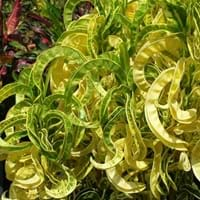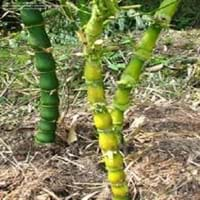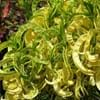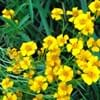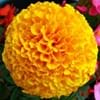Life Span
Annual
Perennial
Origin
South-Central United States, Southwestern United States, Texas
China, Japan
Types
Not Available
Slender Weavers Bamboo, Golden Buddha's Belly Bamboo, Painted Bamboo
Habitat
Cultivated Beds
Subtropical climates, Subtropical forests
USDA Hardiness Zone
9-11
9-11
AHS Heat Zone
12 - 4
12 - 9
Sunset Zone
H1, H2, 4, 5, 6, 7, 8, 9, 11, 12, 13, 14, 15, 16, 17, 18, 19, 20, 21, 22, 23, 24
H1, 18, 19, 20, 21, 22, 23, 24
Habit
Upright/Erect
Clump-Forming
Flower Color
White, Orange, Lavender, Plum
Red
Flower Color Modifier
Bicolor
Bicolor
Fruit Color
Brown, Chocolate
Brown
Leaf Color in Spring
Green
Dark Green
Leaf Color in Summer
Green
Light Green
Leaf Color in Fall
Green
Dark Green
Leaf Color in Winter
Light Green
Dark Green
Plant Season
Summer, Fall
Spring, Summer, Fall, Winter
Sunlight
Full Sun, Partial Sun
Full Sun, Partial Sun, Partial shade
Type of Soil
Loam, Sand
Clay, Loam, Sand
The pH of Soil
Acidic, Neutral, Alkaline
Acidic, Neutral, Alkaline
Soil Drainage
Well drained
Average
Bloom Time
Early Summer, Summer
Not Available
Tolerances
Drought
Not Available
Where to Plant?
Ground
Container, Ground
How to Plant?
Seedlings
Divison
Plant Maintenance
Medium
Medium
Watering Requirements
Do not water excessively
Allow to dry out slightly between watering, Needs 2-3 times watering per week, Requires watering in the growing season, Water Deeply, Water when soil is dry
In Summer
Lots of watering
Lots of watering
In Spring
Moderate
Moderate
In Winter
Average Water
Less Watering
Soil pH
Acidic
Acidic, Neutral, Alkaline
Soil Type
Loam, Moist, Sandy
Clay, Loam, Sand
Soil Drainage Capacity
Loam, Moist, Sandy
Average
Sun Exposure
Full Sun
Full Sun, Partial Sun, Partial shade
Pruning
Remove damaged leaves, Remove dead branches, Remove dead leaves
Cut the culms, Remove damaged leaves, Remove dead branches, Remove dead leaves, Remove dead or diseased plant parts
Fertilizers
All-Purpose Liquid Fertilizer
All-Purpose Liquid Fertilizer, fertilize in growing season
Pests and Diseases
Red blotch
Red blotch
Plant Tolerance
Drought
Not Available
Flower Petal Number
Single
Single
Foliage Texture
Medium
Medium
Foliage Sheen
Matte
Matte
Attracts
Not Available
Butterflies, Mites
Allergy
Not Available
Pollen, Rash
Aesthetic Uses
Showy Purposes
Bonsai
Beauty Benefits
Not Available
Good for skin and hair, Not Available
Environmental Uses
Air purification
Air purification
Medicinal Uses
Not Available
Healthy teeth, Pain in gums
Part of Plant Used
Flowers, Fruits, Leaves
Sap, Stem
Other Uses
Used As Food, Used as Ornamental plant, Used for making black dye
Container, Espalier, Screen, Used in paper industry
Used As Indoor Plant
Sometimes
Insignificant
Used As Outdoor Plant
Yes
Yes
Garden Design
Container, Hanging Basket
Container, Feature Plant, Screening / Wind Break, Topiary / Bonsai / Espalier, Tropical
Botanical Name
PROBOSCIDEA louisianica
BAMBUSA ventricosa
Common Name
Ram's Horn
Buddha's Belly Bamboo, Clumping Bamboo, Ventricose Bamboo
In Hindi
Proboscidea louisianica
बुद्ध के पेट बांस
In German
Proboscidea louisianica
Buddhas Bauch Bambus
In French
PROBOSCIDEA louisianica
Le Bamboo Belly de Bouddha
In Spanish
louisianica PROBOSCIDEA
De bambú del vientre de Buda
In Greek
proboscidea louisianica
Κοιλιά Μπαμπού Βούδα
In Portuguese
proboscidea louisianica
Bamboo barriga de Buda
In Polish
Proboscidea louisianica
Buddy Belly Bamboo
In Latin
proboscidea louisianica
Buddha ventre Bamboo
Phylum
Magnoliophyta
Magnoliophyta
Class
Magnoliopsida
Liliopsida
Order
Scrophulariales
Poales
Family
Pedaliaceae
Poaceae
Genus
Proboscidea
Bambusa
Clade
Angiosperms, Asterids, Eudicots
Angiosperms, Commelinids, Monocots
Tribe
Not Available
Bambuseae
Subfamily
Not Available
Bambusoideae
Number of Species
Not Available
Season and Care of Ram's Horn and Buddha's Belly Bamboo
Season and care of Ram's Horn and Buddha's Belly Bamboo is important to know. While considering everything about Ram's Horn and Buddha's Belly Bamboo Care, growing season is an essential factor. Ram's Horn season is Summer and Fall and Buddha's Belly Bamboo season is Summer and Fall. The type of soil for Ram's Horn is Loam, Sand and for Buddha's Belly Bamboo is Clay, Loam, Sand while the PH of soil for Ram's Horn is Acidic, Neutral, Alkaline and for Buddha's Belly Bamboo is Acidic, Neutral, Alkaline.
Ram's Horn and Buddha's Belly Bamboo Physical Information
Ram's Horn and Buddha's Belly Bamboo physical information is very important for comparison. Ram's Horn height is 30.50 cm and width 61.00 cm whereas Buddha's Belly Bamboo height is 152.40 cm and width 5.50 cm. The color specification of Ram's Horn and Buddha's Belly Bamboo are as follows:
Ram's Horn flower color: White, Orange, Lavender and Plum
Ram's Horn leaf color: Green
Buddha's Belly Bamboo flower color: Red
- Buddha's Belly Bamboo leaf color: Dark Green
Care of Ram's Horn and Buddha's Belly Bamboo
Care of Ram's Horn and Buddha's Belly Bamboo include pruning, fertilizers, watering etc. Ram's Horn pruning is done Remove damaged leaves, Remove dead branches and Remove dead leaves and Buddha's Belly Bamboo pruning is done Cut the culms, Remove damaged leaves, Remove dead branches, Remove dead leaves and Remove dead or diseased plant parts. In summer Ram's Horn needs Lots of watering and in winter, it needs Average Water. Whereas, in summer Buddha's Belly Bamboo needs Lots of watering and in winter, it needs Less Watering.
